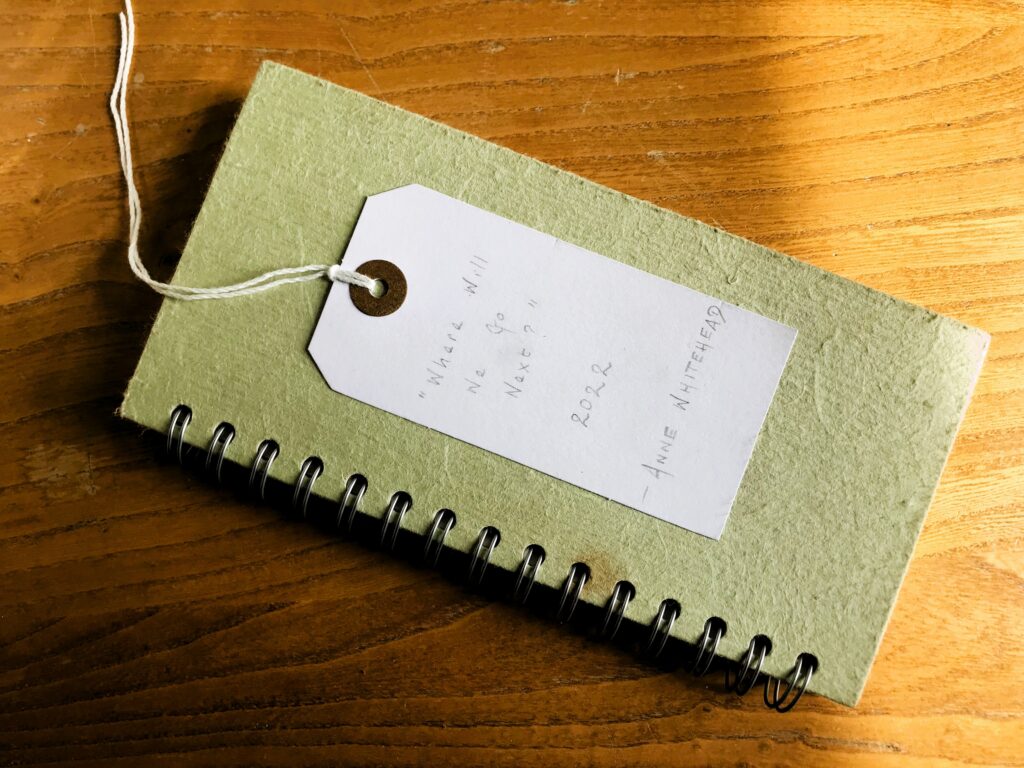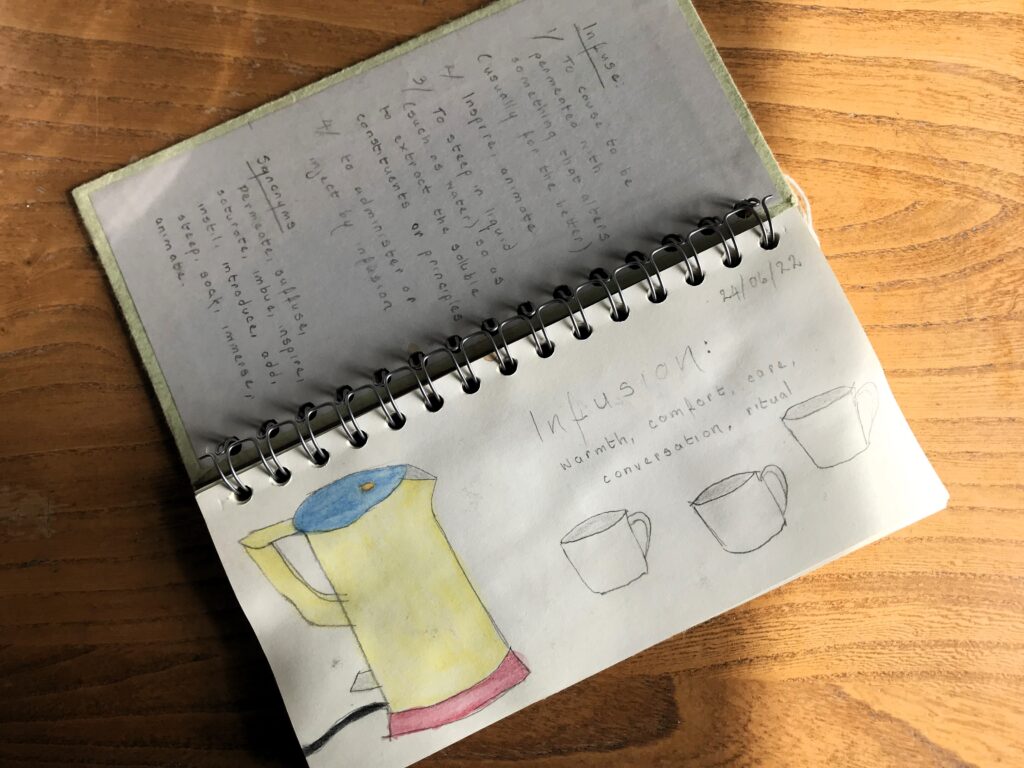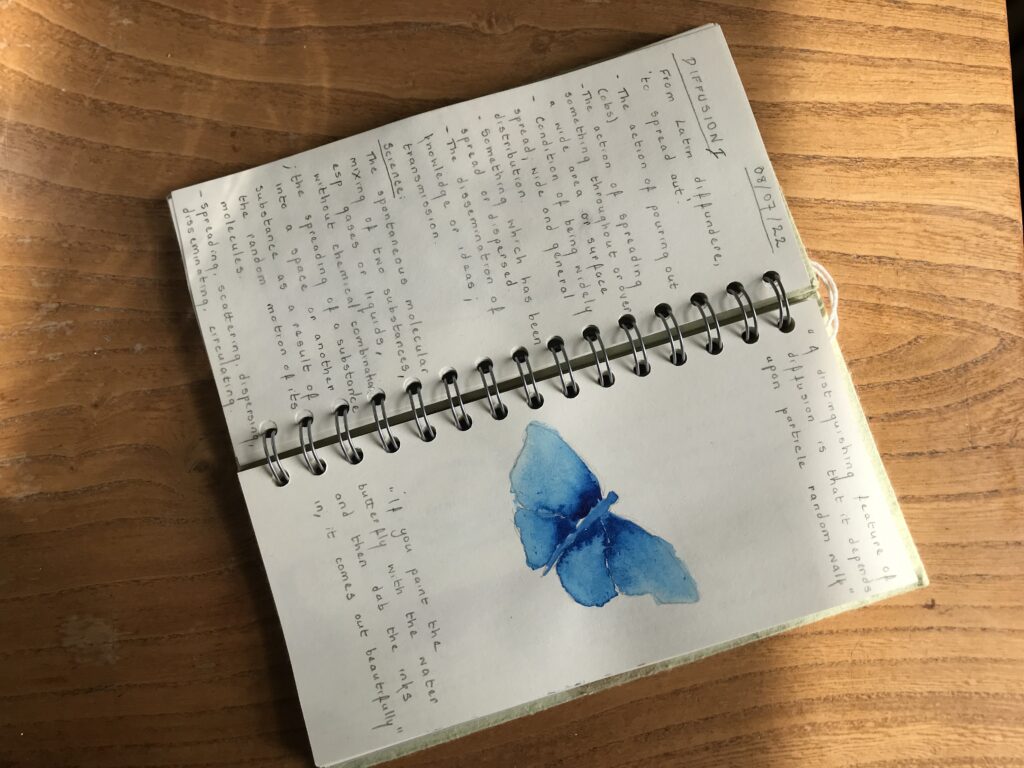
In the first session of the Losing a Twin at Birth project, artist Kate Sweeney handed out sketchbooks to the parents, so that they could use the inks made in the sessions to draw images. I was also offered a sketchbook and I used it to record my thoughts on the sessions with the parents. I found that this way of notetaking enabled me to reflect on the language we had been working with, as well as on the process of ink making itself.
In our introductory sessions with the parents, we shared conversation over a cup of tea. As a way of demonstrating that inks can be made from the most everyday materials, Kate used the teabags to create an ‘ink’ that was brought into the second session and used to experiment with different kinds of mark making. We thought together about how the ink itself constituted an archive of the first session, preserving the tea that each person had chosen, and distilling an essence of our conversation.

In my sketchbook entry following the first session, I reflected on the language of infusion to represent both the ink-making process and the methodology of the project. Looking up infusion, I found the following definitions listed.
(1) to steep in liquid (such as water) so as to extract the soluble constituents or principles. This was resonant both with the immersion of the teabag in water to make the tea that we drank together in the session, and Kate’s further steeping of the used teabags to make the inks. The ritual of making the tea framed our conversation, acting as a model for how making the inks from the materials collected by the parents would facilitate our conversations about their experiences of loss.
(2) to cause to be permeated with something that alters, usually for the better. This sense of infusion develops the first meaning to suggest that the act of steeping can also be transformative, producing a change. This represented our shared hope that by making the inks and the film, we would be able to make a positive change.
(3) to inspire or animate. Kate’s film-making process involves the animation of drawings, and this meaning of infusion seemed to anticipate the ways in which she would imbue the parents’ ink drawings with something new, infusing them with a different life and energy.
In the second sessions with the parents, Kate gave them the inks she had made from the teabags. The liquid had darkened to a peaty colour, due to the effect of the materials used to preserve it. Kate explained that this was known in dye making as the ‘saddening’ process. As we explored the materials that the parents had brought in from their memory walks, we talked in greater depth about their experiences of grief, and the sessions felt that they too were infused with a deeper sorrow than our first conversations. My sketchbook page following these sessions reflects on the meanings of ‘to sadden’: (1) ‘to deepen colours by the addition of additives’; (2) ‘to cause to feel sorrow; to become sad’.
In the third session of the project, Kate gave the parents the inks she had made from the materials collected on their memory walks. We then used the inks to draw and write with. Kate drew a butterfly with water and dabbed in the inks, which diffused across the paper to suggest the shape of wings. Our conversations focused on the parents’ hopes for the film. They wanted the film to give comfort to other parents who had experienced the same loss by showing that, although the grief does not go away, it is possible to live beside it as a family.

My sketchbook notes following this session reflect on the meanings of diffusion. In science, diffusion refers to the spreading of one substance into another as a result of the random motion of molecules. This was what we had witnessed together, as the ink dispersed through the water on Kate’s drawing to form butterfly wings. By extension, diffusion also refers to the dissemination of knowledge, and this picked up the parents’ desire to circulate their experience to others through the film. As we watched the ink pull through the water, it felt to me that there was something there too of the lost twin’s delicate trace in the lives of the remaining family.
My sketchbook enabled me to think with, rather than about, the creative process that Kate was using to make the inks and film. My notes documented the ways in which aspects of the creative process infused our conversations, meaning that the language of ink making became expressive of the phases of the project itself.
